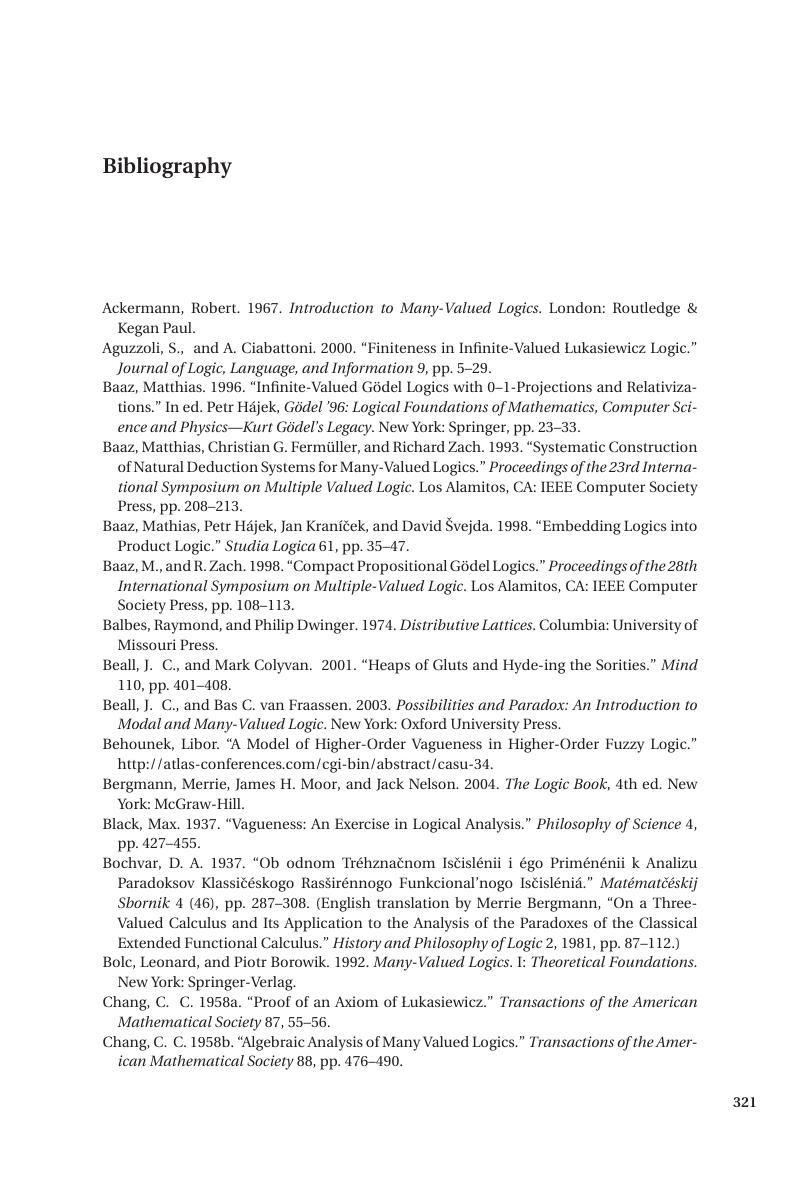Book contents
- Frontmatter
- Contents
- Preface
- 1 Introduction
- 2 Review of Classical Propositional Logic
- 3 Review of Classical First-Order Logic
- 4 Alternative Semantics for Truth-Values and Truth-Functions: Numeric Truth-Values and Abstract Algebras
- 5 Three-Valued Propositional Logics: Semantics
- 6 Derivation Systems for Three-Valued Propositional Logic
- 7 Three-Valued First-Order Logics: Semantics
- 8 Derivation Systems for Three-Valued First-Order Logic
- 9 Alternative Semantics for Three-Valued Logic
- 10 The Principle of Charity Reconsidered and a New Problem of the Fringe
- 11 Fuzzy Propositional Logics: Semantics
- 12 Fuzzy Algebras
- 13 Derivation Systems for fuzzy Propositional Logic
- 14 Fuzzy First-Order Logics: Semantics
- 15 Derivation Systems for Fuzzy First-Order Logic
- 16 Extensions of Fuzziness
- 17 Fuzzy Membership Functions
- Appendix: Basics of Countability and Uncountability
- Bibliography
- Index
- References
Bibliography
Published online by Cambridge University Press: 05 June 2012
- Frontmatter
- Contents
- Preface
- 1 Introduction
- 2 Review of Classical Propositional Logic
- 3 Review of Classical First-Order Logic
- 4 Alternative Semantics for Truth-Values and Truth-Functions: Numeric Truth-Values and Abstract Algebras
- 5 Three-Valued Propositional Logics: Semantics
- 6 Derivation Systems for Three-Valued Propositional Logic
- 7 Three-Valued First-Order Logics: Semantics
- 8 Derivation Systems for Three-Valued First-Order Logic
- 9 Alternative Semantics for Three-Valued Logic
- 10 The Principle of Charity Reconsidered and a New Problem of the Fringe
- 11 Fuzzy Propositional Logics: Semantics
- 12 Fuzzy Algebras
- 13 Derivation Systems for fuzzy Propositional Logic
- 14 Fuzzy First-Order Logics: Semantics
- 15 Derivation Systems for Fuzzy First-Order Logic
- 16 Extensions of Fuzziness
- 17 Fuzzy Membership Functions
- Appendix: Basics of Countability and Uncountability
- Bibliography
- Index
- References
Summary

Information
- Type
- Chapter
- Information
- An Introduction to Many-Valued and Fuzzy LogicSemantics, Algebras, and Derivation Systems, pp. 321 - 326Publisher: Cambridge University PressPrint publication year: 2008
